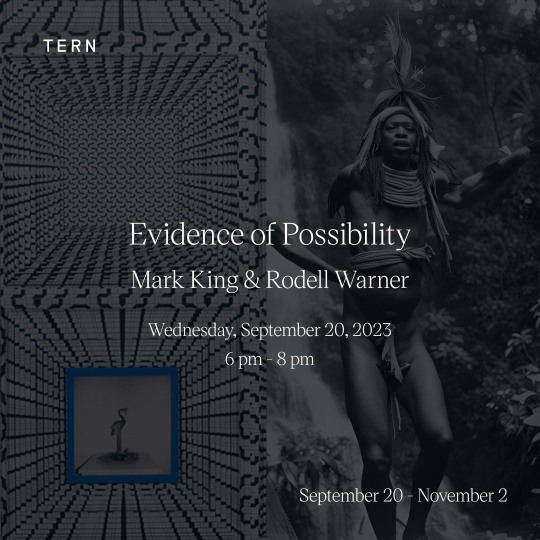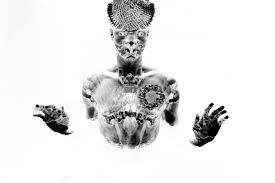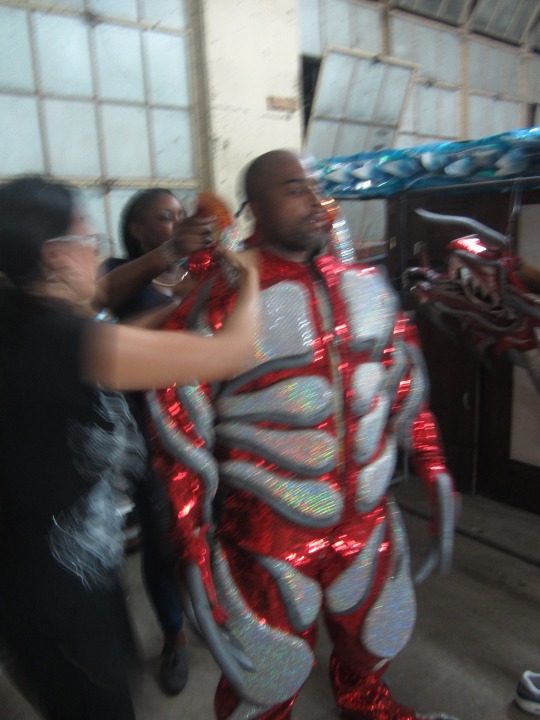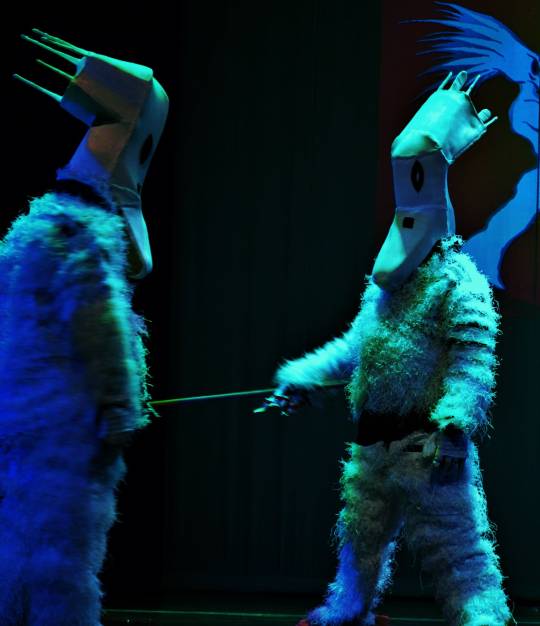#Sexypink/Mark King
Explore tagged Tumblr posts
Text

Sexypink - TERN is proud to announce our upcoming exhibition, “Evidence of Possibility” by regional artists, Mark King and Rodell Warner.


Barbadian Artist Mark King | Trinidad and Tobago Artist Rodell Warner
......................................................................
Mark King is a Barbadian interdisciplinary artist working in photography, installation, fashion, and sculpture.
Rodell Warner is a Trinidadian artist working primarily in new media and photography whose works assume various forms in a process of exploration and rediscovery.

Barbadian Artist Mark King
Together, King and Warner present the “evidence of possibility”, pushing each other past the boundaries of their respective practices at the intersection of fine art, research, and technology.
This exhibition features AI-generated images on aluminum, ceramic sculptures, video prints, and textiles

Trinidad and Tobago Artist Rodell Warner
“Evidence of Possibility” will run from September 20th to November 4th, 2023 with an opening reception on Wednesday, September 20th, 2023, from 6 pm - 8 pm.
For more information on this exhibition, email us at [email protected].
We look forward to celebrating with you then!
#sexypink/Barbadian Artist Mark King#sexypink/Trinidad and Tobago Artist Rodell Warner#sexypink/TERN#sexypink/Evidence of Possibility#tumblr/Rodell Warner/Mark King#tumblr/TERN#Nassau Bahamas#new media#photography#fashion#multiple disciplines#AI generated images
0 notes
Link
~Sexypink~ Another look at Caribbean Artists and their processes.
#Sexypink/Caribbean Art#Sexypink/Tavares Stracthan#Sexypink/Mark King#Sexypink/Suchitra Mattai#Richard Mark Rawlins#Sheena Rose#Paul Anthony Smith#Deborah Jack#Performance#painting#drawing#investing#money#careers in Art#Caribbean Artists
3 notes
·
View notes
Link

#usa#Sexypink/Mark King#Sexypink/Barbadian American Artist#Sexypink/strong messages#Mark King#Barbadian American#digital technology#the body#humanity#character#instinct#reflexes#multidisciplinary#techniques
2 notes
·
View notes
Photo

S E X Y P I N K
Mariel Brown | Trinbago Filmmaker
UPCOMING: an online course on Contemporary Caribbean Art for the Victoria and Albert Museum. During the course. Ms Brown leads several online conversations with some of her favourite artists, including Blue Curry, Cosmo Whyte, Nadia Huggins, Olivia McGilchrist and Mark King. You can find out more about it and sign up here: https://bit.ly/3Hs0Y1o
#sexypink/Mariel Brown#sexypink/conversations on Art#sexypink/Contemporary Caribbean Art#Victoria and Albert Museum#tumblr/Mariel Brown#filmmaker#Blue Curry#Cosmo Whyte#Nadia Huggins#Olivia McGilchrist#Mark King#online courses at the V&A#Contemporary caribbean Art
0 notes
Photo




Sexypink - In Bereavement - Thank you Rubadiri Victor for permission to reprint your recollections in text and image of a talent gone so soon.
.................................................
Rest in Perfect Peace Mark Akini Nottingham. My Deepest Condolences go out to his Family & Closest Friends- especially to a brother-in-arms like Arnold Goindhan... It is distressful when it is someone so young & still so full of Promise... Mark was an enormously creative soul, with a grand appetite for Life & Creative possibility. When a number of us sparked the underground creative movements of the 1990s, Mark and a cohort of his peers from the St Joseph Valley emerged as the next Rapso young guns- Black Lyrics.
They were the face of the Rapso generation right after the Kindred generation. They in fact have a pretty good album of young Teen Rapso that has never been released. This may be a great time to bless it with air... The group of four escaped the limitations of their valley home and 'Pinny' and Mark especially descended into the sometimes viper-pit that could be Trini and Port of Spain theatre (lol).
They actually broke the mold and did excellently for themselves, becoming steadfast working actors and creators- probably the hardest working theatre men of their generation... Mark was a member of my troupe of actors in my company- the WIRE BEND Folklore Theatre.
They were the first people I called when I formed it in 2015. I owe him, Pinny, Renee Michelle King, Nicole Wong Chong, Karina Andrews 'Arlette', Kurtis Gross, and others so much because they committed to be the vehicles for me to tell my stories, and have done so since. Mark and Pinny in particular have been fearless in disappearing into roles and collaborating with my madness. Not every actor can act well in full body costumes and puppets- fewer can manage 7 complex costume changes, whilst nailing all the respective characters per play. Dragons, Imps, Lions, Wolves, Old Men, Children, African Kings,- Mark never hesitated to wrestle with the role and render it. He was especially my go-to to play 'The Boy'- that recurring immortal archetype of the mythical innocent young male.
He did not need to act it- he was very much the Boy. Apart from his fresh-facedness he had that openess, curiousity, and appetite for life. He also had the naughtiness of the Boy too... Because of this and his wit, he also was my choice to portray my version of the traditional Anansi... He nailed it...He and Pinny, like many of us who choose this life, have a profound connection to 'the Child inside' and for the sacredness and essentialness of Play. So Mark was playful as he embodied those essential archetypes- and also as he moved through life.
He was a committed Teacher, Actor, and Rapso-man. He was moving into being a full multi-media titan embracing film/video and more- especially dedicated to the disenfranchised Boys of the Street- the Zess generation. He wanted to record their songs and tell their stories in film (one of the other things about Mark is that he got things done). I think he understood how profoundly the Arts expanded his life from being an urban village boy from the St Joseph Valley with ceilings on his expectations.
He wanted to repeat that emancipation for others...Mark- though young- was very much a family MAN. He had a relatively large-ish family and was an excellent father to his kids, who he adored. My heart goes out to them... Too young. This one. Too young. A lot of good ones are going.
We can only hope it is as Stalin said, ''MORE COME...''We will dedicate the 2023 Season of Wire Bend in April to him. Rest in Peace, Young Brother...



#sexypink/Mark Nottingham#sexypink/bereavement#sexypink/Mark Akini Nottingham#sexypink/Actor#sexypink/Performance Arts#tumblrMark Akini Nottingham#tumblr/Wirebend Folklore Theatre#tumblr/Rapso Time#rapsoacting#performance#theatre#Wirebend Folklore Theatre#passing#bereavement.#loss#talent#promise#hope#entertainment#art
0 notes